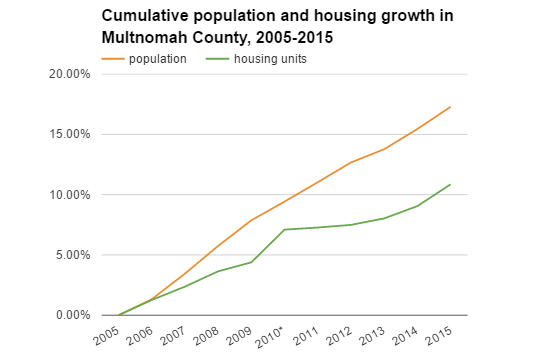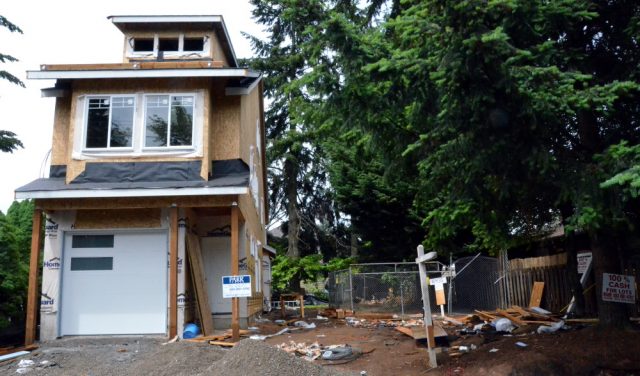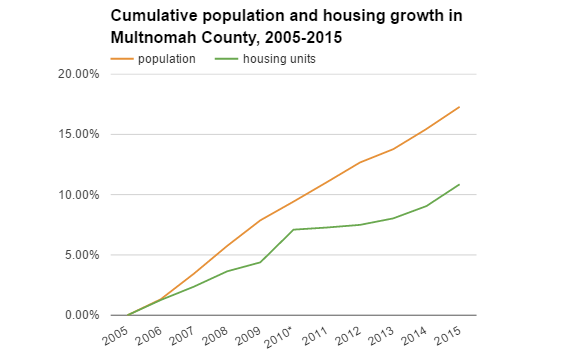
*The 2010 jump is related to better data from the decennial Census.
Data: American Community Survey. Chart: BikePortland.
After 10 years of falling further and further behind the number of people moving to Portland — and paying the price in rising rents, especially in bikeable areas — Portland nearly kept up with its own migration last year.
That’s according to American Community Survey figures released Thursday, which showed Multnomah County adding 4,688 net new homes in 2015. That’s the most to be reported from this data set since at least 2005, the first year it was available.
Since that year, Multnomah County’s population has grown 59 percent faster than its housing supply. That’s combined with relatively rapid growth in high-wage local jobs to rapidly drive up housing prices.
Last year, according to real estate analysts at Norris Beggs and Simpson, monthly rent at the average Portland-area apartment rose $100 — with the sharpest hikes in older, cheaper units.
Until local property owners actually start to see their rentals or sale listings sit open for more than a few weeks, housing prices are unlikely to fall. And the figures released Thursday show that the county’s population is still rising slightly faster than its housing supply: Multnomah County added 1.6 percent more people in 2015 but only 1.4 percent more homes.
Advertisement
“Based on the continued shortage of units and the steady to increasing demand in the coming years, we do not expect vacancy rates to approach 5 percent for at least the next 12 to 18 months and possibly longer,” the Barry Apartment Construction Report, a respected source of local housing data, wrote last month. “During 2016 and 2017, we expect a total of 12,000 to 14,000 new units to become available. The current levels of construction are meeting the new demand, but are failing to make up much ground on our low vacancy rates.”

(Photo: M.Andersen/BikePortland)
A study of California housing prices released in February concluded that in neighborhoods where more new market-rate homes are built, fewer people get displaced, presumably in part because the new, additional units gave wealthier households somewhere to move into other than the home of a less wealthy household.
As the city council crosses some of the last t’s today on a new comprehensive land-use plan and gets ready to start putting it into action, it’s worth considering what Portland can do keep adding more homes at least as fast as it has been for the last few years. If it doesn’t, be ready to keep saying “goodbye” to people who’ve helped make Portland the place it is.
— Michael Andersen, (503) 333-7824 – michael@bikeportland.org
The Real Estate Beat is a regular column. You can sign up to get an email of Real Estate Beat posts (and nothing else) here, or read past installments here.


